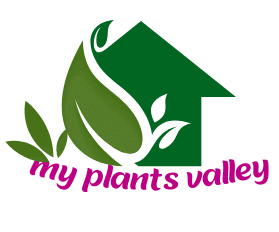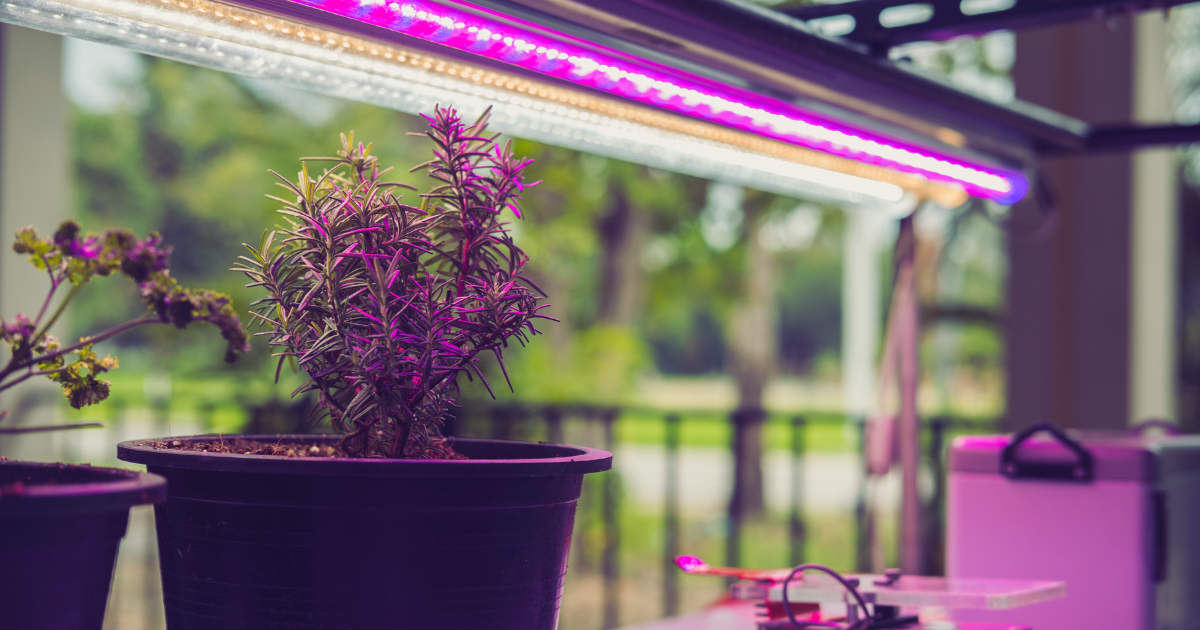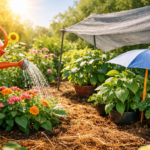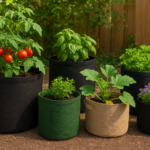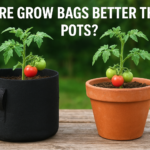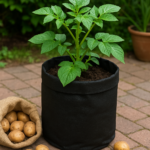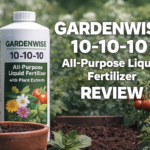Light is one of the most crucial factors for success when growing plants. While most people focus on visible light, ultraviolet (UV) light—specifically UVB light—has garnered attention for its potential benefits in gardening. UVB light, a form of ultraviolet radiation with wavelengths between 280 and 315 nanometers, is known for producing vitamin D in humans, but how does it affect plants?
Some studies suggest that UVB light can enhance specific plant characteristics like pigmentation, flavor, and even resistance to pests. However, it’s not without risks—too much UVB exposure can damage plant cells, leading to stunted growth and other issues. So, would UVB light help your plants grow? This article dives into the science behind UVB light and its impact on plant health, helping you decide whether or not UVB should be a part of your growing setup. Let’s explore the evidence together!
What is UVB Light?

UVB light is a form of ultraviolet (UV) radiation with wavelengths ranging from 280 to 315 nanometers. It is a part of the non-visible light spectrum emitted by the sun. While the Earth’s ozone layer absorbs most UV rays, a small amount reaches the surface, contributing to natural sunlight. In humans, UVB light is essential for vitamin D production, but it can also cause skin damage and sunburn when exposure is excessive. In plants, UVB light has a more complex role—it can promote certain beneficial traits like pigmentation and disease resistance but can also cause cellular damage if not used correctly.
How Plants Use Light for Photosynthesis

Photosynthesis is how plants convert light into chemical energy to fuel their growth. During photosynthesis, plants absorb light primarily through pigments like chlorophyll, which captures light in the blue and red wavelengths of the visible spectrum. This light energy is then used to convert carbon dioxide and water into glucose, a form of sugar that plants use for energy and oxygen, which they release into the air.
Photosynthesis occurs mainly in a plant’s leaves and involves two key stages: light-dependent and light-independent reactions (or Calvin Cycle). In light-dependent reactions, chlorophyll absorbs sunlight, which splits water molecules into oxygen and protons while producing energy-storing molecules like ATP and NADPH. In the Calvin Cycle, this energy converts carbon dioxide into glucose. Without light, plants can’t do photosynthesis, which stunts their growth and productivity.
Understanding the Different Types of UV Light
The UV light spectrum is divided into three categories: UVA, UVB, and UVC. UVA light has the longest wavelength (315-400 nm) and penetrates deeper into the skin and plant cells but is less intense. UVB light, with medium wavelengths (280-315 nm), has more vital energy and can cause sunburn in humans and stress in plants. UVC light has the shortest wavelengths (100-280 nm) and is the most dangerous form of UV radiation, but it’s mostly blocked by the Earth’s atmosphere. Each type of UV light interacts differently with living organisms, including plants.
How Much UVB Light is Beneficial for Plants?
The amount of UVB light beneficial to plants depends on several factors, including plant species, growth stage, and overall light exposure. Generally, UVB light should be used in moderation to avoid harmful effects while still providing its potential benefits:
- Low to Moderate Exposure: Most studies suggest that low to moderate UVB exposure—typically around 5-10% of the total light spectrum—can be beneficial. This level can stimulate the production of protective compounds and improve plant resilience without causing damage.
- Species-Specific Needs: Different plant species respond differently to UVB light. For example, some plants, like certain herbs and vegetables, may benefit from slightly higher UVB exposure than ornamental plants. Research specific to your plant species can provide more precise guidelines.
- Growth Stage Considerations: Young plants or seedlings are more sensitive to UVB light. It’s often recommended to start with lower UVB levels and gradually increase exposure as the plants mature. Overexposure during early growth stages can cause stunted growth and damage.
Timing and Positioning of UVB Lights
Proper timing and positioning are crucial for maximizing the benefits of UVB light while minimizing potential harm:
- Timing: UVB lights should be used for shorter periods than other light sources. Typically, 1-2 hours of UVB exposure per day is sufficient, particularly during the late morning or early afternoon when natural sunlight is most intense. Overexposure can lead to stress and damage.
- Positioning: UVB lights should be positioned appropriately from plants to ensure even and controlled exposure. Placing the UVB light too close can result in excessive intensity while placing it too far can reduce its effectiveness. A general guideline is to position the UVB light about 12-18 inches above the plant canopy, adjusting based on the light’s intensity and the plant’s response.
Differences Between UVA, UVB, and UVC Light

UVA, UVB, and UVC light are all part of the ultraviolet spectrum, but they have different wavelengths and impacts:
- UVA Light (315-400 nm): This is the longest wavelength of UV light. It penetrates deeper into plant tissues but doesn’t provide much energy for photosynthesis. Instead, UVA light can influence other aspects of plant growth, such as pigment production and stress responses.
- UVB Light (280-315 nm): UVB light has a shorter wavelength and higher energy than UVA. It influences plants by promoting protective mechanisms, such as thickening leaves and producing secondary metabolites. UVB can also enhance plant coloration and resistance to pests and diseases. However, overexposure to UVB can damage plant cells and hinder growth.
- UVC Light (100-280 nm): UVC light is the most harmful form of UV radiation due to its high energy. Fortunately, most of it is absorbed by the Earth’s ozone layer, so it doesn’t reach plants. If exposed to UVC light, plant tissues could suffer significant damage, including DNA breakdown and cellular disruption.
Can UVB Light Help Plants Grow?
UVB light, though less commonly used in traditional plant cultivation, can help plants grow under the right conditions. While plants primarily rely on visible light—mainly blue and red wavelengths—for photosynthesis, UVB light plays a more specialized role. In small amounts, UVB light can stimulate specific protective responses in plants by producing thicker leaves and increasing beneficial compounds like flavonoids and anthocyanins. These compounds enhance the plant’s color and flavor and improve resistance to pests, diseases, and environmental stress.
However, UVB light is a double-edged sword. In low to moderate doses, it can boost plant resilience and improve overall health. In contrast, excessive exposure can damage plant cells, leading to stunted growth, burned leaves, and reduced yields. The key is balancing UVB exposure to leverage its benefits without causing harm.
UVB light can strategically strengthen plants in controlled environments like indoor gardens or greenhouses, particularly when exposed to stressors such as pests or diseases. However, it should never be used as the primary light source and must be combined with other light types like full-spectrum or natural sunlight for optimal growth.
Benefits of UVB Light for Plants
- Enhanced Pigmentation: UVB light can boost the production of pigments like anthocyanins and flavonoids in plants, resulting in deeper colors in fruits, flowers, and leaves. This enhances the visual appeal and can even improve the flavor of certain plants like berries and herbs.
- Increased Resistance to Pests and Diseases: Exposure to UVB light triggers a stress response in plants, leading them to produce protective compounds. These compounds act as natural defenses against pests, fungi, and diseases, reducing the need for chemical pesticides.
- Stimulated Plant Hormones: UVB light stimulates the production of hormones like auxins, crucial in regulating plant growth and development. This leads to stronger stems, better leaf formation, and improved overall structure.
- Improved UV Tolerance: Regular, controlled exposure to UVB light can help plants build resilience to harmful UV rays. This is particularly useful for outdoor plants that are exposed to natural sunlight.
- Increased Nutrient Density: Certain plants exposed to UVB light have shown increased beneficial compounds such as antioxidants and vitamins, which can boost the nutritional value of fruits, vegetables, and herbs.
The Downside of UVB Exposure on Plants
While UVB light offers several benefits to plants, its use has potential downsides, mainly when plants are overexposed or exposed for prolonged periods. Here are some of the adverse effects:
- Cell Damage: Excessive UVB exposure can cause damage to plant cells, leading to cellular breakdown. This can result in necrosis (death of tissue), which appears as brown or black spots on leaves and stems.
- Stunted Growth: Overexposure to UVB light can interfere with plant growth, leading to shorter, weaker plants. This happens because the energy typically directed toward growth is instead used to repair UV-induced damage.
- Leaf Burn and Desiccation: Similar to sunburn in humans, UVB light can cause leaf burn in plants, making them appear dry, shriveled, or discolored. This is especially common in young plants or species not naturally adapted to high UV levels.
- Reduced Yield: For crops and flowering plants, excessive UVB light can reduce yields by causing stress that negatively impacts flower development, fruit set, and seed production.
- Photosynthesis Disruption: High UVB exposure can interfere with photosynthesis, reducing a plant’s ability to convert sunlight into usable energy. This can lead to reduced vitality and lower productivity.
Do All Plants Respond to UVB Light the Same Way?
Not all plants respond to UVB light in the same way. Different species have varying levels of sensitivity to UVB exposure, and their responses depend on their evolutionary background, environmental adaptations, and specific needs.
- Sun-Loving Plants: Plants that naturally thrive in high-sun environments, such as desert succulents and alpine plants, tend to be more resilient to UVB light. These species have adapted to higher UV exposure and often benefit from UVB light, showing improved pigmentation, enhanced protection against pests, and greater resilience to environmental stressors.
- Shade-Tolerant Plants: Plants accustomed to lower light conditions, like ferns and some tropical species, are generally more sensitive to UVB light. Overexposure to UVB can damage their delicate leaves and stifle growth. These plants do not require much UVB light and can suffer from cellular damage if exposed for prolonged periods.
- Flowering vs. Non-Flowering Plants: Flowering plants may benefit more from UVB light because it can promote better flower coloration and the production of secondary metabolites that protect against pests and diseases. Non-flowering plants may still see benefits, but the effects are usually less pronounced.
- Edible Plants: Certain vegetables, fruits, and herbs, such as tomatoes, peppers, and lettuce, can respond positively to controlled UVB exposure. It can improve flavor, nutritional content, and resistance to pests. However, overexposure can lead to reduced yields and damaged produce.
UVB as a Replacement for Regular Grow Lights?
UVB light should not be used as a replacement for regular grow lights. While UVB light can provide specific benefits to plants, such as enhancing pigmentation, improving resistance to pests, and boosting certain protective compounds, it does not supply the full spectrum of light necessary for overall plant growth. Regular grow lights, such as full-spectrum LEDs or fluorescent lights, emit a balanced range of wavelengths, including blue and red light, essential for photosynthesis. These wavelengths drive the plant’s energy production and fuel growth from seedling to maturity.
On the other hand, UVB light occupies only a narrow part of the ultraviolet spectrum (280-315 nm) and lacks the red and blue wavelengths critical for photosynthesis. If used as the sole light source, UVB would not provide enough energy for the plant to thrive, leading to weak growth and poor development.
Instead, UVB light should be used as a supplement to regular grow lights, adding specific benefits like stress tolerance and improved coloration without replacing the foundational light plants need for healthy growth. A balanced lighting setup—combining full-spectrum lights with moderate UVB exposure—is the best approach for indoor gardening.
UVB Light vs. Other Light Sources
When it comes to growing plants, light plays a crucial role, but not all light sources are created equal. Let’s compare UVB light with other familiar light sources used in gardening:
- UVB Light: As part of the ultraviolet spectrum, UVB light has a wavelength of 280-315 nm and is not essential for photosynthesis but can promote certain protective and adaptive traits in plants. It triggers the production of pigments, enhances disease resistance, and can improve nutrient density. However, it can be harmful in large doses and is usually used as a supplemental light source rather than a primary one.
- Full-Spectrum Grow Lights: Full-spectrum lights mimic natural sunlight, balancing red, blue, and other wavelengths essential for photosynthesis. These lights are effective for plant growth, promoting solid stems, leaves, and blooms. They are often the go-to for indoor and greenhouse gardening since they cover the full range of light plants.
- LED Grow Lights: LED grow lights can be tailored to emit specific wavelengths that promote photosynthesis, usually focusing on red and blue light. They are energy-efficient, long-lasting, and ideal for indoor gardening. Unlike UVB, LED lights do not produce harmful rays and are suitable for primary lighting needs.
- Natural Sunlight: The most balanced and powerful light source, natural sunlight provides the full spectrum of wavelengths, including UVB. While outdoor plants benefit naturally from sunlight, indoor plants typically need supplemental lighting to compensate for the reduced intensity and UV exposure.
Can Too Much UVB Light Harm Plants?
Yes, too much UVB light can harm plants. While UVB exposure in small, controlled doses can enhance plant pigmentation, increase resistance to pests, and stimulate the production of beneficial compounds, excessive UVB light can be detrimental. Overexposure to UVB rays can lead to cellular damage in plants, causing leaf burn, discoloration, and necrosis. This damage manifests as brown or black spots on leaves and stems, making the plant appear scorched or dry. In extreme cases, too much UVB light can stunt plant growth by diverting energy away from growth processes and toward repairing UV-induced damage.
Photosynthesis, the process by which plants convert light into energy, can also be disrupted by high levels of UVB exposure, leading to reduced productivity and lower crop yields. Young plants and seedlings are especially vulnerable to UVB damage as their tissues are more sensitive to intense light. Therefore, while UVB can be beneficial when used sparingly, monitoring the amount and duration of exposure is crucial to prevent harmful effects and ensure optimal plant health. Balancing UVB with other light sources is critical to promoting growth while avoiding damage.
Is UVB a Cost-Effective Solution for Home Gardeners?
UVB light can be helpful for home gardeners, but it is not typically the most cost-effective solution. While UVB exposure can enhance certain plant traits—such as improved color, flavor, and resistance to pests—its benefits are more specialized than essential. UVB lights are often more expensive than standard grow lights like LEDs or fluorescents, and their targeted use means they are generally only beneficial as a supplement rather than a primary light source.
Investing in full-spectrum LED or fluorescent grow lights is usually more cost-effective for the average home gardener. These lights provide the essential wavelengths for photosynthesis and overall plant growth, allowing plants to thrive without UVB. Additionally, full-spectrum lights are more energy-efficient, longer-lasting, and versatile, making them a better value for everyday use.
Using UVB lights requires careful management to avoid harming plants, which may not be practical for beginners or those on a budget. Regular grow lights paired with natural sunlight are more efficient and cost-effective than UVB lighting for gardeners looking to maximize value and minimize cost. However, for specialized growers seeking specific plant enhancements, UVB might be worth the investment.
Alternatives to UVB Light for Plant Growth
While UVB light offers specific benefits, several effective alternatives can support healthy plant growth without the risk of damage associated with ultraviolet exposure. Here are some popular options:
- Full-Spectrum Grow Lights: Full-spectrum lights mimic natural sunlight and provide the range of wavelengths needed for photosynthesis. These lights are highly effective for overall plant growth, offering a balanced combination of red, blue, and green light that helps plants thrive from seedling to maturity.
- LED Grow Lights: LED lights are energy-efficient, long-lasting, and customizable. They can be tailored to emit specific wavelengths like red and blue light, essential for photosynthesis and stimulating growth. LEDs are particularly popular for indoor gardening due to their low heat output and ability to provide the correct spectrum of light for different plant stages.
- Fluorescent Grow Lights: Fluorescent lights, such as T5 and CFLs, are another alternative that provides a good balance of red and blue light. They are more affordable than LEDs and are effective for growing smaller plants, seedlings, and herbs. Fluorescents are commonly used in indoor gardening setups and greenhouses.
- Natural Sunlight: The best and most powerful light source is natural sunlight. Outdoor plants naturally receive the full spectrum of light, including UVA, UVB, and visible light. For indoor gardens, placing plants near a sunny window or using a sunroom can provide sufficient light without artificial sources.
- HID (High-Intensity Discharge) Lights: HID lights, including metal halide (MH) and high-pressure sodium (HPS), offer light solid intensity for large-scale indoor gardens. Metal halide bulbs produce more blue light, while HPS bulbs emit more red light, making them suitable for different growth stages. However, they tend to run hot and consume more energy.
Best Practices for Using UVB Lights in Your Garden
Using UVB lights effectively in your garden requires careful planning and monitoring to maximize their benefits while minimizing potential harm. Here are some best practices to follow:
- Start Low and Gradually Increase Exposure: Use UVB lights for short periods—around 15 to 30 minutes per day—and gradually increase the exposure as plants adjust. Monitor the plants for signs of stress or damage, such as leaf burn or discoloration.
- Position Lights Correctly: UVB lights should be positioned 12-18 inches above the plant canopy to ensure even distribution. Ensure the light is not too close, which can lead to excessive exposure, especially for sensitive plants. Adjust the height based on plant response and light intensity.
- Use UVB as a Supplemental Light: Combine UVB light with full-spectrum grow lights or natural sunlight. UVB should enhance specific traits like pigmentation, resilience, and pest resistance rather than as the primary light source.
- Time Exposure: Limit UVB exposure to 1-2 hours daily, ideally during the brightest parts of the day, when natural UV levels would be highest. This mimics the natural environment and helps prevent overexposure.
- Consider Plant Type: Certain plants, like tomatoes, peppers, and herbs, can benefit more from UVB light than shade-loving or delicate plants. Research the specific needs of your plants to determine the ideal UVB exposure.
- Monitor Growth and Adjust Accordingly: Regularly check your plants for signs of stress or growth changes. If plants begin showing signs of damage, reduce the UVB exposure or reposition the lights to lower intensity.
FAQ
What is UVB light?
UVB light is an ultraviolet light with wavelengths ranging from 280 to 320 nanometers. It is a part of the UV spectrum that can affect plant growth and development.
Can UVB light grow plants on its own?
No, UVB light alone cannot support plant growth. Plants primarily need visible light for photosynthesis, particularly in the red and blue spectrums. UVB can complement these lights, but more is needed on its own.
How does UVB light affect plants?
UVB light can enhance plant defenses, improve resilience against pests and diseases, and sometimes influence the production of compounds like flavonoids. However, too much UVB can harm plants, causing leaf burn or stunted growth.
Which plants benefit most from UVB light?
Plants naturally growing in high UV environments, such as succulents or certain alpine species, may benefit from UVB exposure. However, many plants do not require UVB light and can thrive without it.
How should UVB light be used with plants?
UVB light should be used sparingly and in combination with full-spectrum grow lights. Monitoring the intensity and duration is essential to avoid overexposure, typically limiting UVB exposure to a few hours a day.
Conclusion
In conclusion, while UVB light can offer certain benefits to plant growth, such as enhancing defense mechanisms and increasing the production of protective compounds, it is not a standalone solution for growing plants. Plants primarily rely on visible light, particularly the red and blue spectrums, for photosynthesis and optimal growth. UVB light should be used in moderation and in combination with full-spectrum light to avoid potential damage, like leaf burn or stunted growth. Understanding the specific needs of your plants is crucial when incorporating UVB light into their care regimen.
